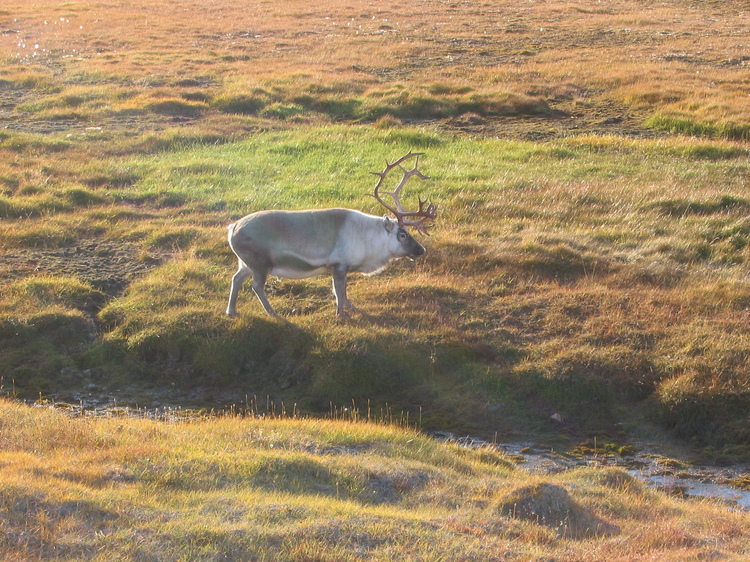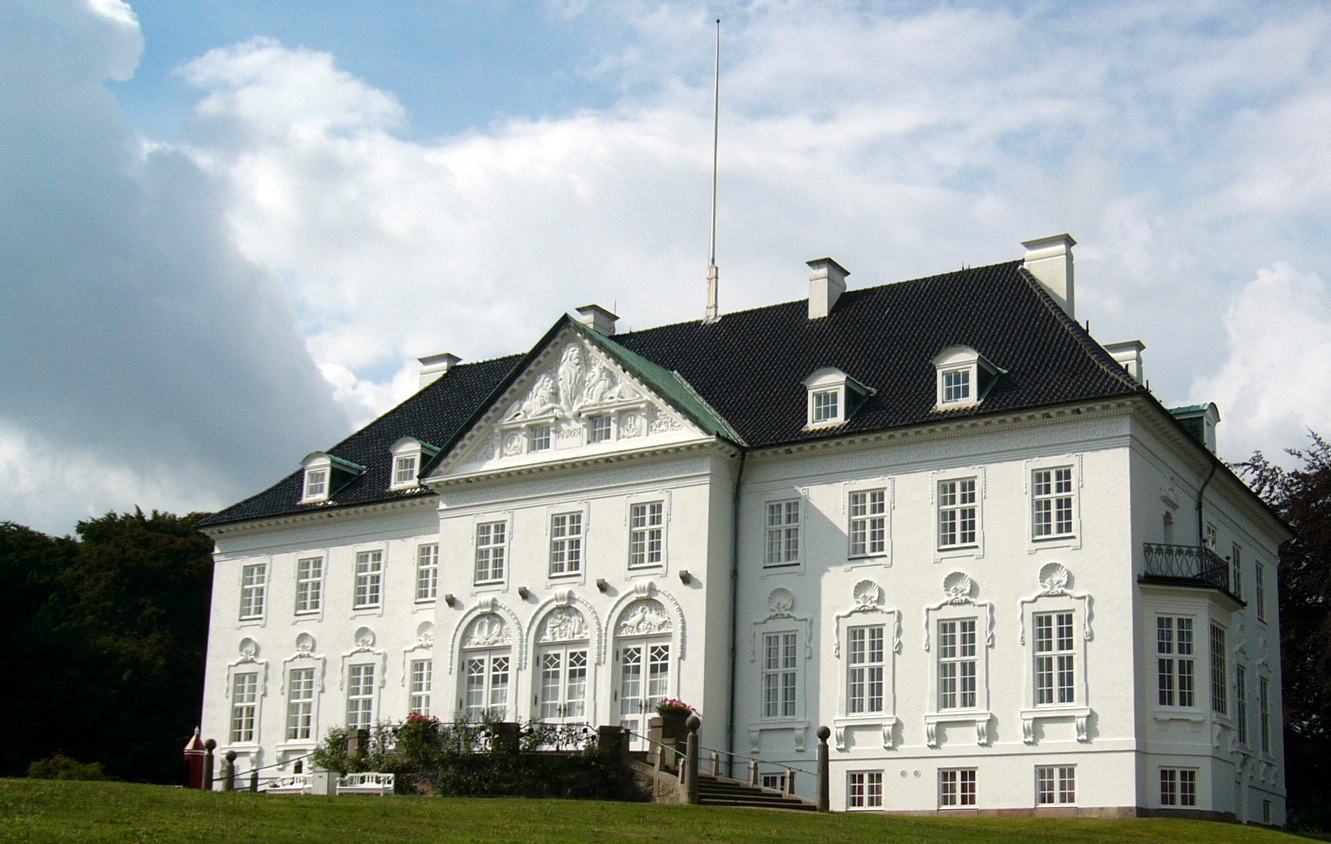|
Mols Bjerge National Park
Mols Bjerge National Park or Nationalpark Mols Bjerge is a Danish national park in the area known as ''Mols Bjerge'' (Mols Hills, lit.: Mols Mountains) in Syddjurs Municipality, Central Jutland, inaugurated on 29 August 2009. The protected area, measures in size. The Mols Hills, reaching a height of , are centrally located in the park, and take up 2,500 ha. "More than half of all wild Danish plant species" can be found at Mols Bjerge. Legal status The creation of the park - Denmark's second - was announced by Minister of the Environment Troels Lund Poulsen on 17 January 2008. It was proposed that the park would be established under the Executive Order 789, dated 21 August 2009, into national law. The park was finally inaugurated by Queen Margrethe II on 29 August 2009. Geography The park comprises most of the southern parts of the headland of Djursland. It is bounded on the east by the sea of Kattegat, the forests of Kaløskovene in the west and to the south by multiple inlet ... [...More Info...] [...Related Items...] OR: [Wikipedia] [Google] [Baidu] |
Syddjurs Municipality
Syddjurs municipality is a municipality (Danish, '' kommune'') in Region Midtjylland in Denmark just north of Aarhus and is a part of the Aarhus area. It covers an area of 696.7 km² and has a population of 41,671 (1 April 2014). On 1 January 2007 Syddjurs municipality ("South Djursland") was created as the result of ''Kommunalreformen'' ("The Municipal Reform" of 2007), consisting of the former municipalities of Ebeltoft, Midtdjurs, Rosenholm, and Rønde. The municipality covers most of southern Djursland, Skødshoved, Helgenæs, Mols and the Ebeltoft peninsula. The municipality is part of Business Region Aarhus and of the East Jutland metropolitan area, which had a total population of 1.378 million in 2016. Locations Politics Municipal council Syddjurs' municipal council consists of 27 members, elected every four years. Below are the municipal councils elected since the Municipal Reform of 2007. Sources * Municipal statisticsNetBorger Kommunefakta deliv ... [...More Info...] [...Related Items...] OR: [Wikipedia] [Google] [Baidu] |
Nordic Stone Age
The Nordic Stone Age refers to the Stone Age of Scandinavia. During the Weichselian glaciation (115,000 – 11,700 years ago), almost all of Scandinavia was buried beneath a thick permanent ice cover, thus, the Stone Age came rather late to this region. As the climate slowly warmed up by the end of the ice age, nomadic hunters from central Europe sporadically visited the region. However, it was not until around 12,000 BCE that permanent, but nomadic, habitation in the region took root. Late Upper Paleolithic As the ice receded, reindeer grazed the emerging tundra plains of Denmark and southernmost Sweden. This was the era of the Hamburg culture, tribes who hunted in vast territories that spanned over 100,000 km2, and lived as nomads in teepees, following the reindeer seasonal migrations across the barren tundra. On this land, there was little plant cover, except for occasional arctic white birch and rowan. Slowly a taiga forest appeared. Around 11,400 BCE, the Bromm ... [...More Info...] [...Related Items...] OR: [Wikipedia] [Google] [Baidu] |
Nedre Strandkær
Nedre may refer to: *Nedre Eggedal, village in Sigdal municipality, Norway *Nedre Eiker, municipality in Buskerud county, Norway *Nedre Elvehavn, borough of Trondheim, Norway *Nedre Fagervollvatnet, Norwegian lake that lies in Rana municipality in Nordland *Nedre Fiplingvatnet, Norwegian lake that lies in Grane municipality in Nordland *Nedre Heimdalsvatnet, lake which lies in Vågå and Øystre Slidre municipalities in Oppland county, Norway *Nedre Roasten, lake in Femundsmarka National Park in Sør-Trøndelag county, Norway *Nedre Stjørdal Nedre Stjørdal or Nedre Stjørdalen is a former municipality in the old Nord-Trøndelag county in Norway. The municipality existed from 1850 until its dissolution in 1902. The municipality covered the western part of what is now the municipalit ..., former municipality in Nord-Trøndelag county, Norway * Nedre Veikvatnet, Norwegian lake that lies in Sørfold municipality in Nordland {{Disambiguation ... [...More Info...] [...Related Items...] OR: [Wikipedia] [Google] [Baidu] |
War Reparation
War reparations are compensation payments made after a war by one side to the other. They are intended to cover damage or injury inflicted during a war. History Making one party pay a war indemnity is a common practice with a long history. Rome imposed large indemnities on Carthage after the First (Treaty of Lutatius) and Second Punic Wars. Some war reparations induced changes in monetary policy. For example, the French payment following the Franco-Prussian war played a major role in Germany's decision to adopt the gold standard; the 230 million silver taels in reparations imposed on defeated China after the First Sino-Japanese War led Japan to a similar decision. There have been attempts to codify reparations both in the Statutes of the International Criminal Court and the UN Basic Principles on the Right to a Remedy and Reparation for Victims, and some scholars have argued that individuals should have a right to seek compensation for wrongs they sustained during warfare ... [...More Info...] [...Related Items...] OR: [Wikipedia] [Google] [Baidu] |
Jenisch (family)
Yenish, also spelled Yeniche'' or ''Jenische, may refer to: * Yenish people *Yenish language Yenish (French: ''Yeniche'', German: ''Jenisch''), is a variety of German spoken by the Yenish people, former nomads living mostly in Germany, Austria, Switzerland, Alsace and other parts of France. Components Yenish has been documented since ... {{disambig Language and nationality disambiguation pages ... [...More Info...] [...Related Items...] OR: [Wikipedia] [Google] [Baidu] |
Hack Kampmann
Hack Kampmann (6 September 1856 – 27 June 1920) was a Danish architect, Royal Inspector of Listed State Buildings in Jutland and professor at the architecture department of the Royal Danish Academy of Fine Arts. Marselisborg Palace in Aarhus, built between 1899 and 1902, is among his best known works. Biography His parents were Christian Peter Georg Kampmann, a parish priest, and Johanne Marie Schmidt. He entered the architecture department of the Royal Danish Academy of Fine Arts in 1873 and graduated in 1882, receiving the school's prestigious small gold medal ("Lille guldmedalje") for the design of a "Swimming bath in the Italian Renaissance style". Kampmann went on numerous study trips throughout Europe, paid for by several scholarships, including northern Italy, Greece and Sweden. He also attended the École des Beaux-Arts in Paris in 1882 and worked with professor Jacques Hermant. Back home in Denmark, he became a prolific architect, designing private villas, pri ... [...More Info...] [...Related Items...] OR: [Wikipedia] [Google] [Baidu] |
Long Barrow
Long barrows are a style of monument constructed across Western Europe in the fifth and fourth millennia BCE, during the Early Neolithic period. Typically constructed from earth and either timber or stone, those using the latter material represent the oldest widespread tradition of stone construction in the world. Around 40,000 long barrows survive today. The structures have a long earthen tumulus, or "barrow", that is flanked on two sides with linear ditches. These typically stretch for between 20 and 70 metres in length, although some exceptional examples are either longer or shorter than this. Some examples have a timber or stone chamber in one end of the tumulus. These monuments often contained human remains interred within their chambers, and as a result, are often interpreted as tombs, although there are some examples where this appears not to be the case. The choice of timber or stone may have arisen from the availability of local materials rather than cultural difference ... [...More Info...] [...Related Items...] OR: [Wikipedia] [Google] [Baidu] |
Funnelbeaker Culture
The Funnel(-neck-)beaker culture, in short TRB or TBK (german: Trichter(-rand-)becherkultur, nl, Trechterbekercultuur; da, Tragtbægerkultur; ) was an archaeological culture in north-central Europe. It developed as a technological merger of local neolithic and mesolithic techno-complexes between the lower Elbe and middle Vistula rivers. These predecessors were the Lengyel-influenced Stroke-ornamented ware culture (STK) groups/Late Lengyel and Baden-Boleráz in the southeast, Rössen groups in the southwest and the Ertebølle-Ellerbek groups in the north. The TRB introduced farming and husbandry as a major source of food to the pottery-using hunter-gatherers north of this line. The TRB techno-complex is divided into a northern group including modern northern Germany and southern Scandinavia (TRB-N, roughly the area that previously belonged to the Ertebølle-Ellerbek complex), a western group in the Netherlands between the Zuiderzee and lower Elbe that originated in the Swifte ... [...More Info...] [...Related Items...] OR: [Wikipedia] [Google] [Baidu] |
Hestehave Wood
Hestehave Wood (Horse Garden Wood) on southern Djursland in Denmark, Northern Europe, at the entrance to The Baltic Sea between Denmark and Sweden, is a recreational wood with a temperate coastal climate, owned by the Danish state. Hestehave is located close to the town Rønde, 21 miles north of the second largest city in Denmark, Aarhus. Hestehave Wood is part of Mols Bjerge National Park, with a southern and eastern coastline bordering the ruined Kalø Castle and the Slotsvig- and Følle Bugt- coves at the southern and eastern perimeter. Historically the wood has been part of the Kalø Estate, where the Danish Environmental Research Institute has its headquarters today. The researchers here often use Hestehave Wood for studies, such as of the 300 roe deer in the area. Troll Forrest The oldest parts of Hestehave Wood dates back to the mid-seventeenth century. In the Sea Hills/ Havbakkerne by Følle Bay and the Slotsvig cove, one finds an up to 200 year old so-called tro ... [...More Info...] [...Related Items...] OR: [Wikipedia] [Google] [Baidu] |
Marina
A marina (from Spanish , Portuguese and Italian : ''marina'', "coast" or "shore") is a dock or basin with moorings and supplies for yachts and small boats. A marina differs from a port in that a marina does not handle large passenger ships or cargo from freighters. The word ''marina'' may also refer to an inland wharf on a river or canal that is used exclusively by non-industrial pleasure craft such as canal narrowboats. Emplacement Marinas may be located along the banks of rivers connecting to lakes or seas and may be inland. They are also located on coastal harbors (natural or man made) or coastal lagoons, either as stand alone facilities or within a port complex. History In the 19th century, the few existing pleasure craft shared the same facilities as trading and fishing vessels. The marina appeared in the 20th century with the popularization of yachting. Facilities and services A marina may have refuelling, washing and repair facilities, marine and boat chandlers, ... [...More Info...] [...Related Items...] OR: [Wikipedia] [Google] [Baidu] |
Kaloe Daemning
Caloe was a town in the Roman province of Asia. It is mentioned as Kaloe or Keloue in 3rd-century inscriptions, as Kalose in Hierocles's '' Synecdemos'' (660), and as Kalloe, Kaloe, and Kolone in Parthey's ''Notitiæ episcopatuum'', in which it figures from the 6th to the 12fth or 13th century. Description Caloe was in the upper valley of the Küçük Menderes (Kaystros) western Turkey, and is identified with the modern Kiraz, Keleş stream, to the southwest of Alaşehir (ancient Philadelphia). The 10th-century historian Leo the Deacon, who was born in Caloe, describes the village as, "a very beautiful village in Asia, located on the slopes of Mt. Tmolos, near the sources of the river Kaystros, which, after flowing past the Kelbianon region and offering a most pleasant vista to the beholder, empties out into the gulf of Ephesos, that famous and celebrated city, and forms an estuary." The bishopric of Caloe was a suffragan of the metropolitan see of Ephesus and was thus within t ... [...More Info...] [...Related Items...] OR: [Wikipedia] [Google] [Baidu] |





